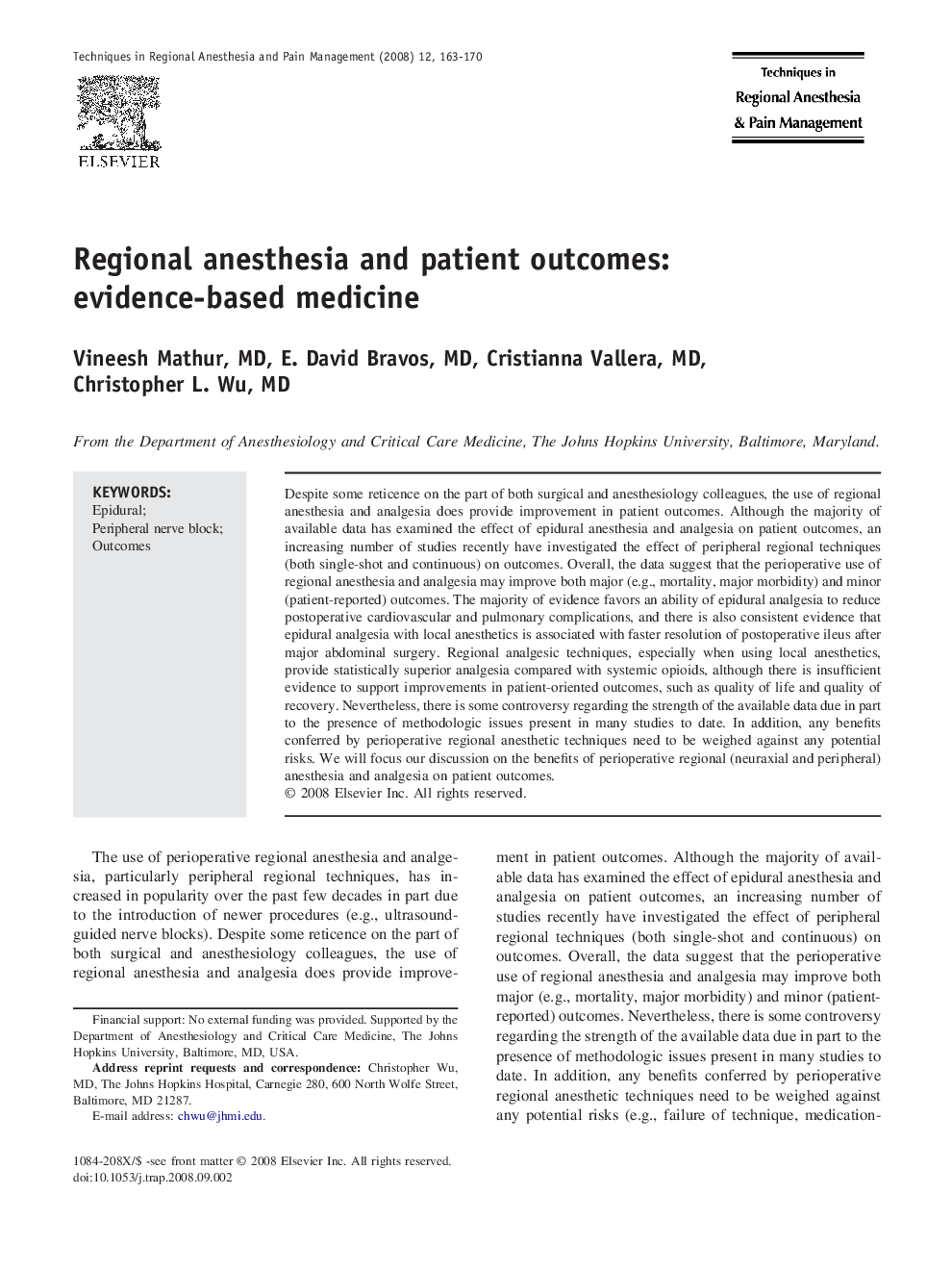| Article ID | Journal | Published Year | Pages | File Type |
|---|---|---|---|---|
| 2772403 | Techniques in Regional Anesthesia and Pain Management | 2008 | 8 Pages |
Despite some reticence on the part of both surgical and anesthesiology colleagues, the use of regional anesthesia and analgesia does provide improvement in patient outcomes. Although the majority of available data has examined the effect of epidural anesthesia and analgesia on patient outcomes, an increasing number of studies recently have investigated the effect of peripheral regional techniques (both single-shot and continuous) on outcomes. Overall, the data suggest that the perioperative use of regional anesthesia and analgesia may improve both major (e.g., mortality, major morbidity) and minor (patient-reported) outcomes. The majority of evidence favors an ability of epidural analgesia to reduce postoperative cardiovascular and pulmonary complications, and there is also consistent evidence that epidural analgesia with local anesthetics is associated with faster resolution of postoperative ileus after major abdominal surgery. Regional analgesic techniques, especially when using local anesthetics, provide statistically superior analgesia compared with systemic opioids, although there is insufficient evidence to support improvements in patient-oriented outcomes, such as quality of life and quality of recovery. Nevertheless, there is some controversy regarding the strength of the available data due in part to the presence of methodologic issues present in many studies to date. In addition, any benefits conferred by perioperative regional anesthetic techniques need to be weighed against any potential risks. We will focus our discussion on the benefits of perioperative regional (neuraxial and peripheral) anesthesia and analgesia on patient outcomes.
